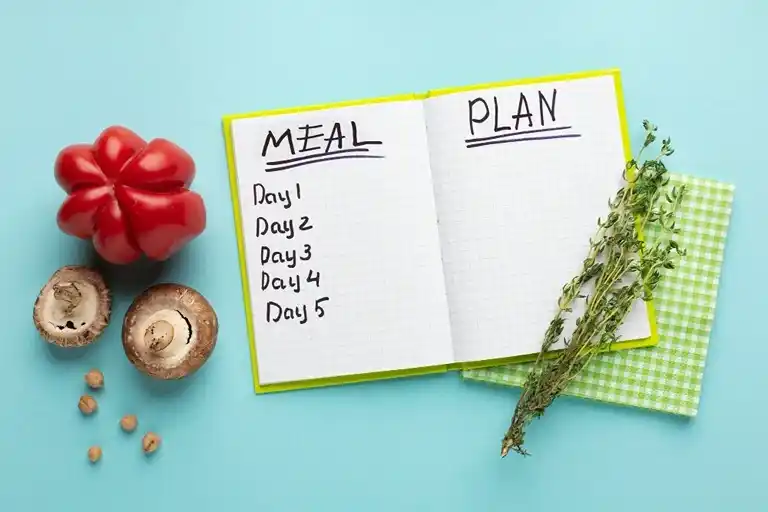Fat Loss Accelerated: Your Macro Cheat Sheet
A lot of people who have tried to lose weight and get in shape have heard of “macronutrients” or “macros.” Macros are an important part of our food that can have a big effect on how our bodies look and our health as a whole. We’re going to talk about macros in depth in this blog post and give you a “Faster Way to Fat Loss Macro Cheat Sheet” to help you reach your weight loss goals faster.
Introduction
It’s not enough to just count calories to lose weight; the kind of calories you eat is also important. That’s where macros come in handy. Macros, which are short for “macronutrients,” are the three main food groups that give us energy: fats, carbs, and proteins. Each of these macronutrients is important for our bodies in its own way and can affect how well we lose fat.
| Macro | Calories per Gram | Goal |
|---|---|---|
| Protein | 4 | 40% |
| Carbohydrates | 4 | 30% |
| Fat | 9 | 30% |
| Fiber | 2 | 20g |
| Water Intake | – | 1/2 oz |
| Average Calories for Weight Loss | – | 1500 |
Protein: The Powerhouse Macronutrient
A good reason is that protein is often called the “building block” macronutrient. It is necessary for muscles and other cells to grow and heal. If you want to lose fat more quickly, protein is especially important for keeping and growing lean muscle mass, which in turn speeds up your metabolism.
In order to lose fat faster, you should make sure that your food includes enough high-quality protein sources. You should get at least 0.8 grams of protein per kilogram of body weight every day. If you’re busy or trying to build muscle, you may need more. Lean meats, chicken, fish, eggs, dairy products, tofu, and legumes are all great sources of protein.
Carbohydrates: Fuel for Energy
Carbs are the body’s main source of energy, so you shouldn’t hate them if you want to lose fat. But it’s important to be smart about the carbs you eat and keep an eye on your general intake if you want to lose fat as quickly as possible.
Whole grains, fruits, veggies, legumes, and other complex carbs should be your first choice. These sources give you energy slowly, keep your blood sugar from rising too high, and make you feel full. On the other hand, simple carbs like those in processed foods, sugary drinks, and refined grains can make you crash in energy and slow down your fat loss.
The amount of carbs you should eat to lose fat depends on your activity level, metabolism, and your individual goals. Try out different amounts and types of carbs to see what works best for you. You can find your ideal carbohydrate range with the help of mobile apps or online tools.
Fats: Not All Fats Are Created Equal
As we are discussing Faster Way To Fat Loss Macro Cheat Sheet. We must know that Fats are not your enemy when it comes to losing fat, despite what most people think. In fact, eating healthy fats is important for keeping hormones in balance, keeping the brain healthy, and making it easier for the body to absorb nutrients.
Avocados, nuts, seeds, olive oil, fatty fish, and coconut oil are all good sources of healthy fats that you should eat. There are a lot of omega-3 fatty acids in these fats. These acids shrink inflammation and help you lose fat.
It’s important to eat healthy fats, but remember that balance is key. Pay attention to serving sizes because fats have more calories than protein and carbs. To keep things in balance, try to get about 20 to 35 percent of your daily calories from fats.

Calorie Deficit: The Key to Fat Loss
Knowing how many macronutrients you’re eating is important, but making a calorie shortfall is even more important if you want to lose fat. A calorie shortage happens when you eat fewer calories than your body needs. This makes your body use fat stores for energy.
Use an online tool to find your Total Daily Energy Expenditure (TDEE) and then figure out your calorie deficit. Then, make a shortfall by taking 500 to 1000 calories off of your TDEE. This mild deficit lets you lose weight in a healthy way that doesn’t make you feel very hungry or change your metabolism.
Don’t forget that losing fat takes time. Diets that promise quick results or tight rules aren’t healthy or sustainable. Try to lose between 0.5 and 1 kilogram of weight every week. This is the most likely way to keep off the weight in the long run.
Tracking Macros: The Faster Way to Fat Loss Macro Cheat Sheet
To simplify the process of tracking your macros, we’ve prepared a cheat sheet with recommended macro ranges:
- Protein: 10-35% of total calories
- Carbohydrates: 45-65% of total calories
- Fats: 20-35% of total calories
Begin by calculating your daily calorie needs based on your TDEE. Then, use these percentages to allocate your macronutrients accordingly. As you progress, monitor how your body responds to these ratios and make adjustments based on your goals and individual requirements.

Meal Planning and Preparation Tips
Achieving faster fat loss also involves effective meal planning and preparation. Here are some practical tips to streamline this process:
- Plan your meals in advance: Dedicate a portion of your week to planning your meals, creating a shopping list, and preparing your food. This proactive approach helps you make healthier choices and resist impulsive decisions.
- Batch cooking: Prepare larger quantities of meals and portion them into individual servings. This saves time during the week and ensures you always have convenient, healthy options at your disposal.
- Utilize food journals or apps: Keep track of your meals and macros by maintaining a food journal or using a mobile app. This keeps you accountable and allows for necessary adjustments.
Final Words about Faster Way To Fat Loss Macro Cheat Sheet
Gaining a comprehensive understanding of macronutrients and effectively incorporating them into one’s fat-loss regimen can significantly impact the overall success of the endeavor. Proteins, carbohydrates, and lipids each serve distinct physiological roles and should be consumed in appropriate proportions. Utilize our “Faster Way to Fat Loss Macro Cheat Sheet” in conjunction with maintaining a calorie deficit to optimize desired outcomes.
In order to achieve fat loss, it is imperative to maintain consistency and exercise patience. The process of fat reduction is characterized by a gradual and protracted nature, necessitating the implementation of a comprehensive and sustainable plan. With the appropriate knowledge, mindset, and commitment, individuals can make significant progress toward achieving their desired physical fitness and well-being.



